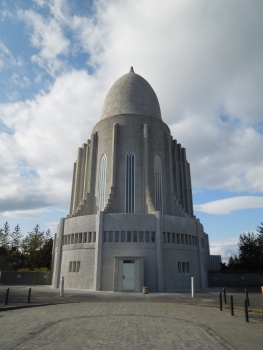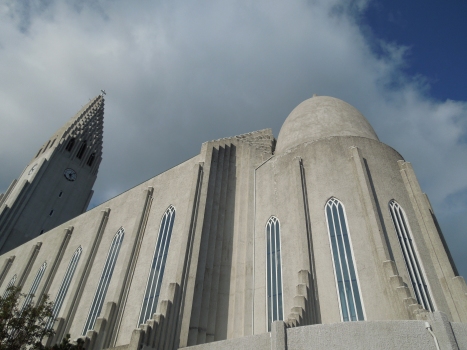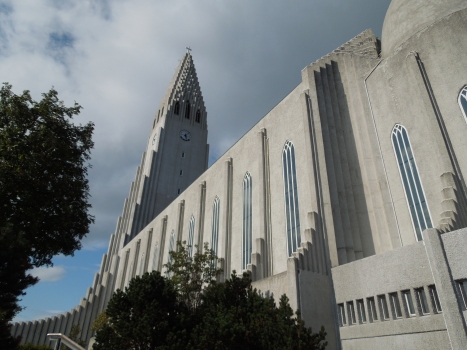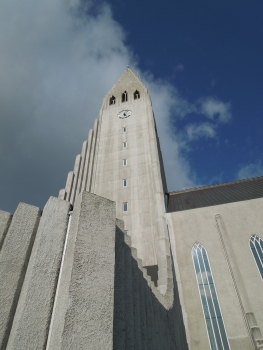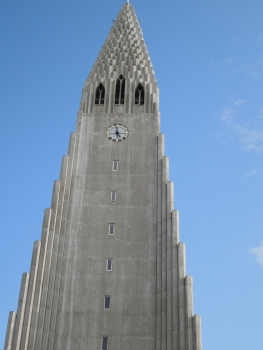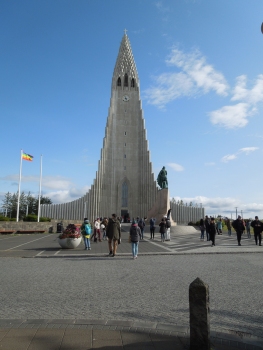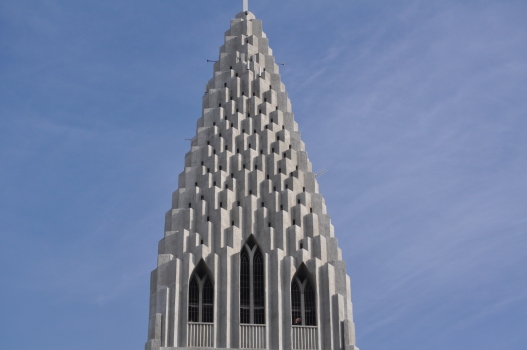General Information
Project Type
| Function / usage: |
Church |
|---|---|
| Architectural style: |
Expressionist |
| Material: |
Concrete structure |
Location
| Location: |
Reykjavik, Capital Region, Iceland |
|---|---|
| Coordinates: | 64° 8' 30.55" N 21° 55' 36.40" W |
Technical Information
Dimensions
| tower | height | 73 m |
Excerpt from Wikipedia
Hallgrímskirkja (Icelandic pronunciation: [ˈhatl̥ˌkrimsˌcʰɪr̥ca], Church of Hallgrímur) is a Lutheran (Church of Iceland) parish church in Reykjavík, Iceland. At 74.5 metres (244 ft) tall, it is the largest church in Iceland and among the tallest structures in the country. Known for its distinctively curved spire and side wings, it has been described as having become an important symbol for Iceland's national identity since its completion in the 1980s. The church is named after the Icelandic poet and cleric Hallgrímur Pétursson (1614–1674), author of the Passion Hymns.
Description
Situated on a hilltop near the centre of Reykjavík, the church is one of the city's best-known landmarks and is visible throughout the city. State Architect Guðjón Samúelsson's design of the church was commissioned in 1937. He is said to have designed it to resemble the trap rocks, mountains and glaciers of Iceland's landscape, in particular its columnar basalt "organ pipe" formations (such as those at Svartifoss). The design is similar in style to the expressionist architecture of Grundtvig's Church of Copenhagen, Denmark, completed in 1940, which has been described as a likely influence, alongside the expressionist Kirche am Hohenzollernplatz in Berlin, Germany (completed in 1933).
Architecturally, Hallgrímskirkja consists of three parts: The tower with the distinctly curved side wings which house service facilities, a nave in more traditional architecture, and a sanctuary at the other end of the nave, whose cylindrical shape has been described as evoking Viking war helmets.
It took 41 years to build the church: construction started in 1945 and ended in 1986, but the landmark tower was completed long before the whole church was finished. The crypt beneath the choir was consecrated in 1948, the steeple and wings were completed in 1974, and the nave was consecrated in 1986. At the time of construction, the building was criticized as too old-fashioned and as a blend of different architectural styles. The church was originally intended to be less tall, but the leaders of the Church of Iceland wanted a large spire so as to outshine Landakotskirkja (Landakot's Church), which was the cathedral of the Catholic Church in Iceland.
The interior is 1,676 square metres (18,040 sq ft).
The church houses a large pipe organ by the German organ builder Johannes Klais of Bonn. It has electronic action; the pipes are remote from the four manuals and pedal console. There are 102 ranks, 72 stops and 5275 pipes. It is 15 metres (49 ft) tall and weighs 25 metric tons (25 long tons; 28 short tons). Its construction was finished in December 1992.
The church is also used as an observation tower. An observer can take a lift up to the viewing deck and view Reykjavík and the surrounding mountains.
The statue of explorer Leif Erikson (c.970 – c.1020) by Alexander Stirling Calder in front of the church predates its construction. It was a gift from the United States in honor of the 1930 Althing Millennial Festival, commemorating the 1000th anniversary of the convening of Iceland's parliament at Þingvellir in 930 AD.
Text imported from Wikipedia article "Hallgrímskirkja" and modified on February 21, 2022 according to the CC-BY-SA 4.0 International license.
Participants
- Guðjón Samúelsson (architect)
Relevant Web Sites
- About this
data sheet - Structure-ID
20017624 - Published on:
29/08/2005 - Last updated on:
19/08/2019


